Series Two
Art in Architecture – Chapter 4
Written by Jonathan Lees RIBA.
Is Architectural Style Important?
Art means different things to different people, and like art, architecture passes through trends and ‘styles’ on a cyclical basis. One moment being ostentatious, the next paired down. A 50-year period is but a blip in the age of architecture, which can trace its routes back to the origins of humankind. Is Architectural style important therefore, when considering a new building to last through the ages?
Listen to the audio version
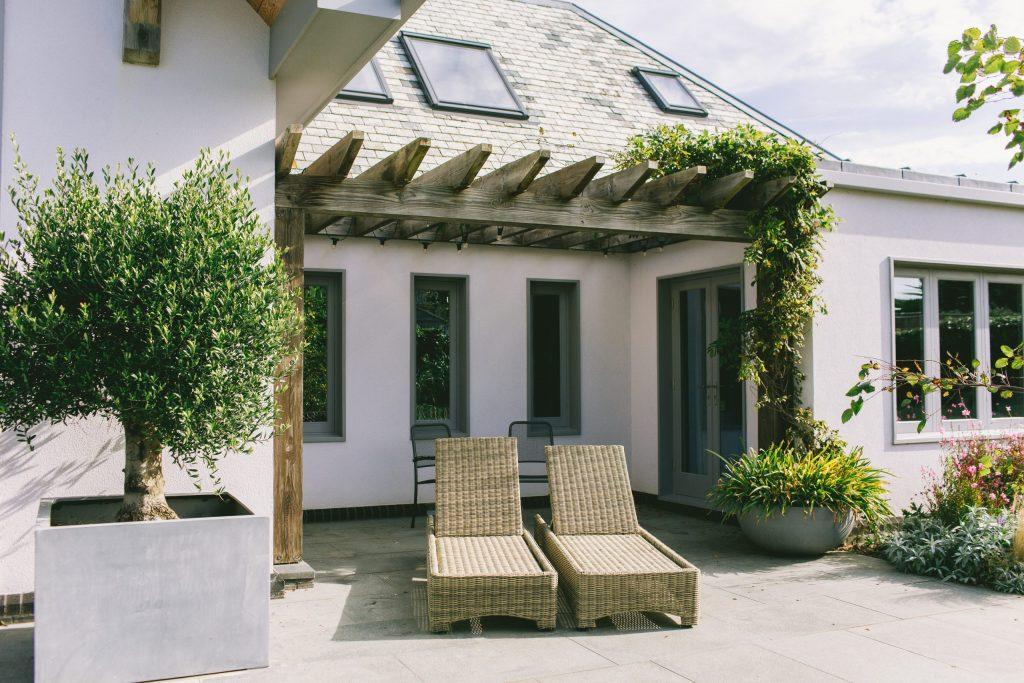
A simply designed garden loggia – Jonathan Lees Architects
‘The public are alive to the influence of art…….‘
It is often common that an argument will be presented that art is for the elite and wealthy, and that classicism and traditionalism is also therefore a ‘style’ whose place is grounded only in lavish, ostentatious country homes or public buildings where there is a desire to prove wealth and power. It has become about trend, rather than the celebration of building and sculpture. The public are alive to the influence of art, and most will be able to tell the difference between honest workmanship and beauty rather than ostentation. Is the architectural style important, or the execution? Has ‘beauty’ been assumed to belong certain ‘styles’ of architecture that appear to cost a great deal of money? The industry has tried to blinker the public with poor quality building construction and design, as the only cost-effective option, which is subsequently attempted to be beautified with ornament. It was the Victorian period, and the onset of the industrial revolution that perhaps brought this about, with ornate, expensive decoration becoming available to the mass builder, causing a dilution of the impact that good design would bring. Kit of parts became available, pattern books of architectural motifs and features were common so that all could build a ‘beautiful’ building. It goes without saying that this led to some wonderful buildings and streetscapes in the Victorian era when such pattern books were applied tastefully and uniquely by their users, but it also evolved and influenced our current stock of lack lustre, ugly, poorly built homes that now dominate the views from the motorway and main routes into our towns and cities with repetitive detailing and a general lack of any character whatsoever. The chosen architectural style in this instance has not automatically resulted in beauty in the finished building.
‘…but I simply do not agree that buildings have to be expensive to be beautiful…..’
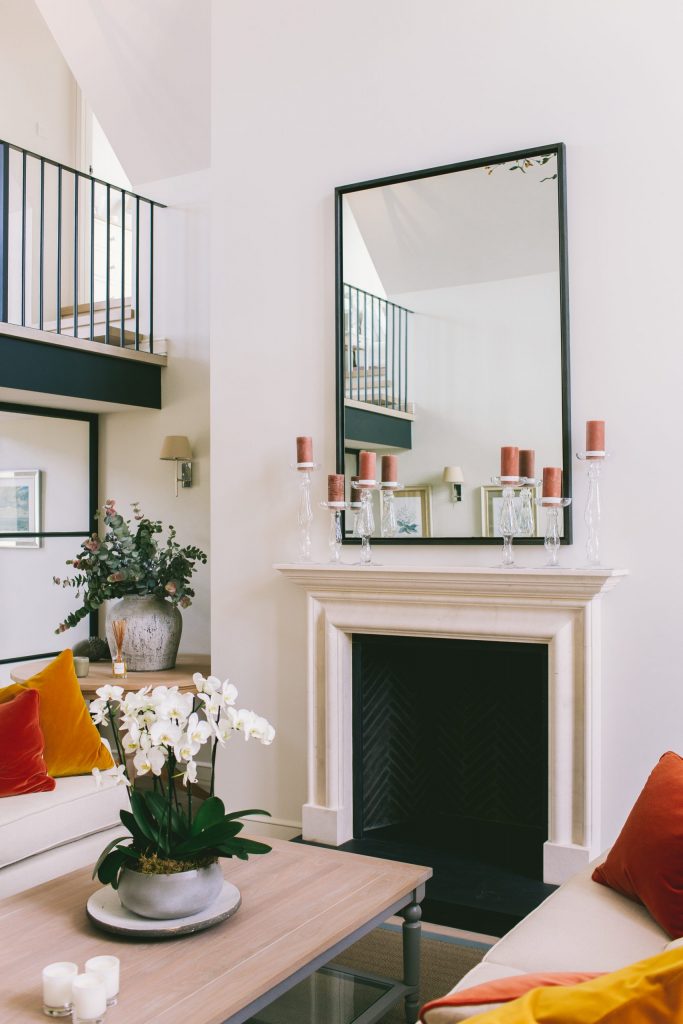
Contemporary Country House – J Lees Architects
Dilution of the role of the Architect in town planning and housing development is perhaps a debate for another time, but my point in relation to art and architecture is that creating beauty with any budget is a skill mastered by great Architects trained to do so. You wouldn’t give a set of oil paints or watercolours to a builder and ask them to paint a masterpiece. There is perhaps the odd one who is a talented painter and gives it a good go, creating something of value, but generally, I think most builders that I know would say that it would be a bit of a mess.
‘…the only excuse for it not being beautiful is laziness, tardiness and the mad rush to get things done.‘
So why take the same approach with our buildings, the most visual art of them all? Yes, I know there are other factors at work, cost, a demand for housing etc. but I simply do not agree that buildings have to be expensive to be beautiful. When thrift is introduced, the Architect really gets creative. That’s when they have to work hard, and some of the finest housing of the last hundred years has been developed by the ‘Modernists’ and their influence on our built environment is equal to that of the Neo-Classical masterpieces. My argument is not about style, it is about art. To answer ‘is architectural style important?’, I say that achieving beauty within any style is the important element. All buildings could be beautiful, we could enrich our lives and improve our wellbeing by improving our built environment; the entire built landscape need not be classically inspired to be beautiful, that would soon become boring, a uniformly uniform environment is uniformly dull. But the only excuse for it not being beautiful is laziness, tardiness, and the mad rush to get things done when sometimes, less haste means more speed.
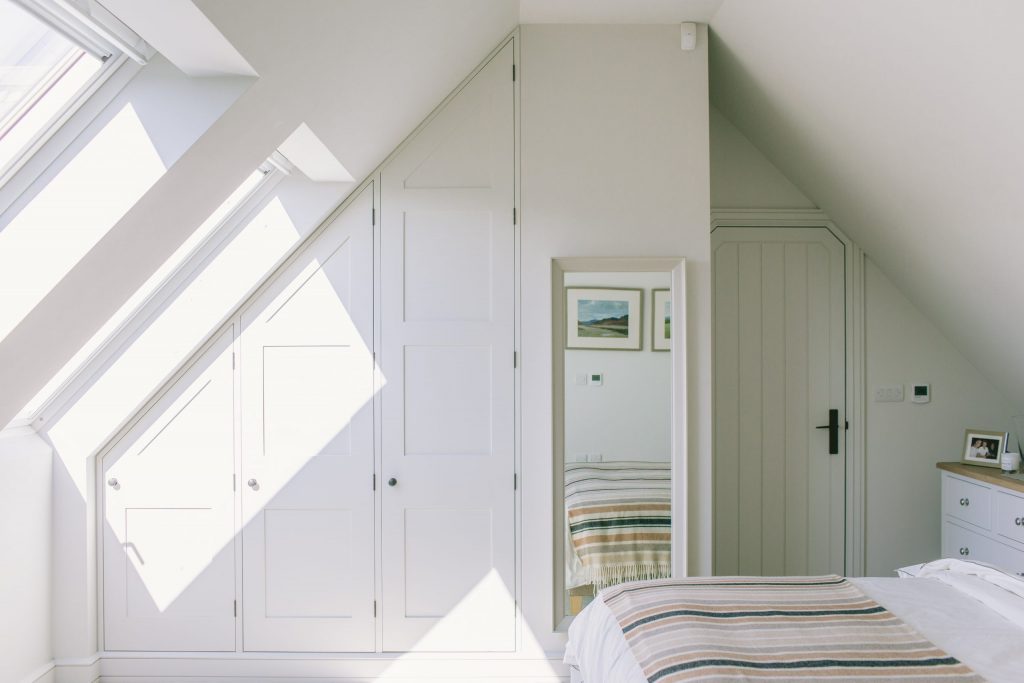
A light and uplifting bedroom – Jonathan Lees Architects
‘…how light enters a space can influence your state of mind and appreciation of the everyday……‘
Housebuilding has now become a multi-billion-pound industry that is dominated by a select few Jerry-builders that suggest that they have to build the houses in this way to meet demand. The materials are rubbish, the design often thoughtless (with the exception of a handful) and the quality of the construction appalling. We are giving our future generations a serious problem to deal with. Yes, we need to build to meet demand, yes, we need to provide low-cost housing, but do we really have to treat architecture and art as bye-words that means a project will automatically be more expensive and therefore irradicate its requirements on financial grounds? Beauty in a building enhances the viewers whole state of mind and need not be sacrificed by the disillusion that this only comes with considerable cost and frippery of decoration. It does not. It comes with considered design that we learn from the experience of historic buildings and environments that lift our spirits and appreciation of the space. So when we ask is architectural style important, the style itself does not create beauty, as beauty can, and should, be in any style and all budgets. We are a culture that covet beautiful objects and materials, landscapes, clothes, etc all to enhance our experience of the everyday, so we should not be conned into thinking our houses could not add to this. It is not important the architectural style that is chosen. Even the smallest matter in designing how light enters a space can influence your state of mind and appreciation of the everyday and is just one design factor in many that can totally alter a person’s state of mind from the moment that they walk into a space, or from the moment that they wake.
T.G. Jackson states in his short essays; ‘Architecture a profession or an Art’, that ‘if people will have better building, they must either pay more for it, or be content with humbler homes’. I do not agree with Jackson that you have to pay more for it, you just need to be clever and employ the right people in the right places and understand that small things, such as the quality of materials, make a huge difference to a project. Building in the current way will only cease when a demand for it changes and more examples of the contrary are built. The recent Covid crisis has made us all rethink the way in which we lead our lives and perhaps this will be the catalyst for an improvement to public spaces and the quality of homes that we live in.
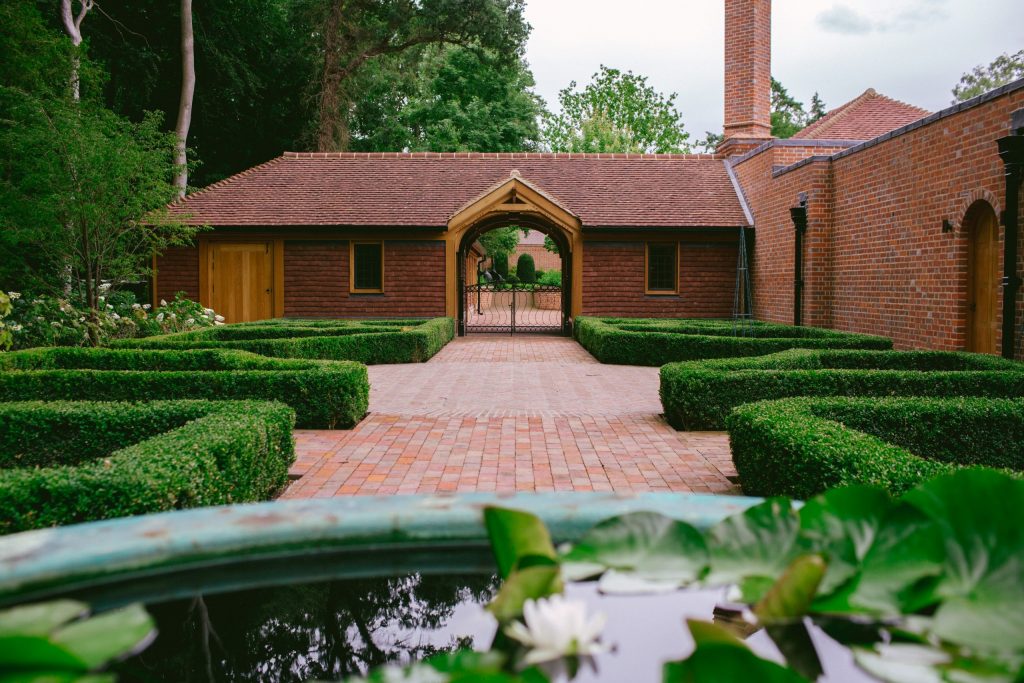
A courtyard rich in texture and atmosphere – Jonathan Lees Architects
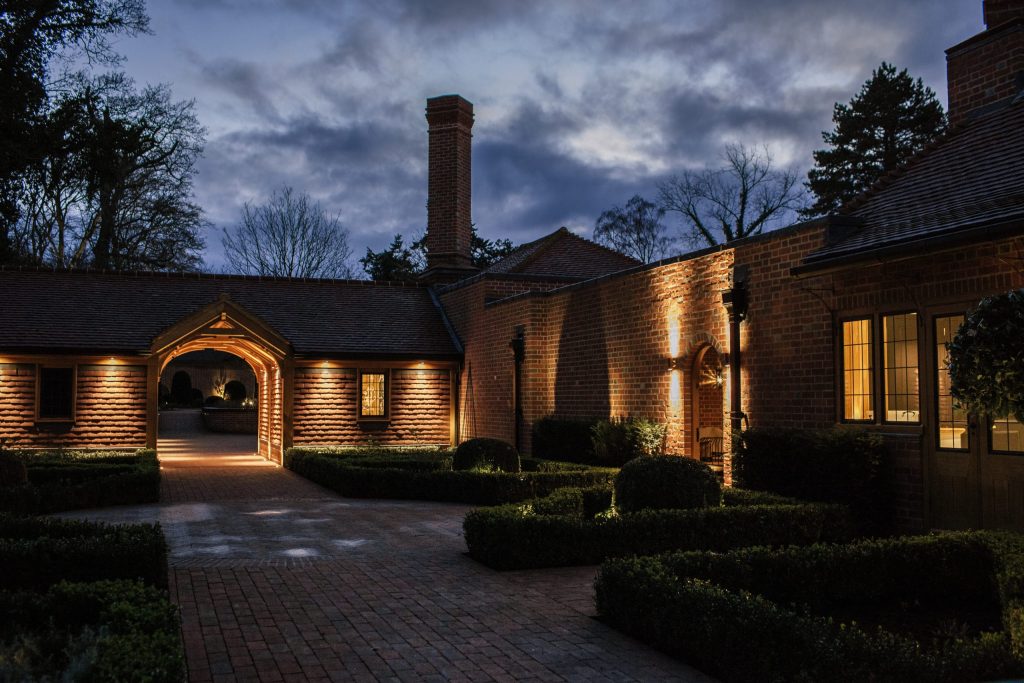
The same courtyard, as considered and beautiful at night – Jonathan Lees Architects
‘…construction is an art, and when conjoined with design a fine art – in fact, Architecture.‘
Making a building beautiful should be left to the Architect, much the same as you would leave an artist to paint a painting and not employ a decorator just because they can wield a brush. The profession is protected for a reason, there is also a reason why Architects train for several years to learn their trade before they go into the workplace. Debates over their training and its purpose aside, they are the tip of the design spear, and you would not go into battle with a blunt spear, would you?
As Jackson puts it; ‘Art, we hold, is not an ornamental something – a gilding or a varnish – which may be laid upon bare construction and so transform it into architecture. It is an influence, a motive, that must reign supreme from the very first moment, and guide and inform the construction equally with considerations of strength and security. In the course of a true Architect’s design there is no moment at which you can say ‘here architecture comes in’; it has been there from the very first, inseparable from plan and construction, affecting and modifying them in ways innumerable and yielding in its turn to modifications suggested by them. Construction is not a science; statics and dynamics are sciences; but construction is an art, and when conjoined with design a fine art – in fact, architecture.
Introduction, page xxi. ‘Architecture a profession or an Art; thirteen short essays on the qualifications and training of architects’ published in 1892. T.G Jackson A.R.A
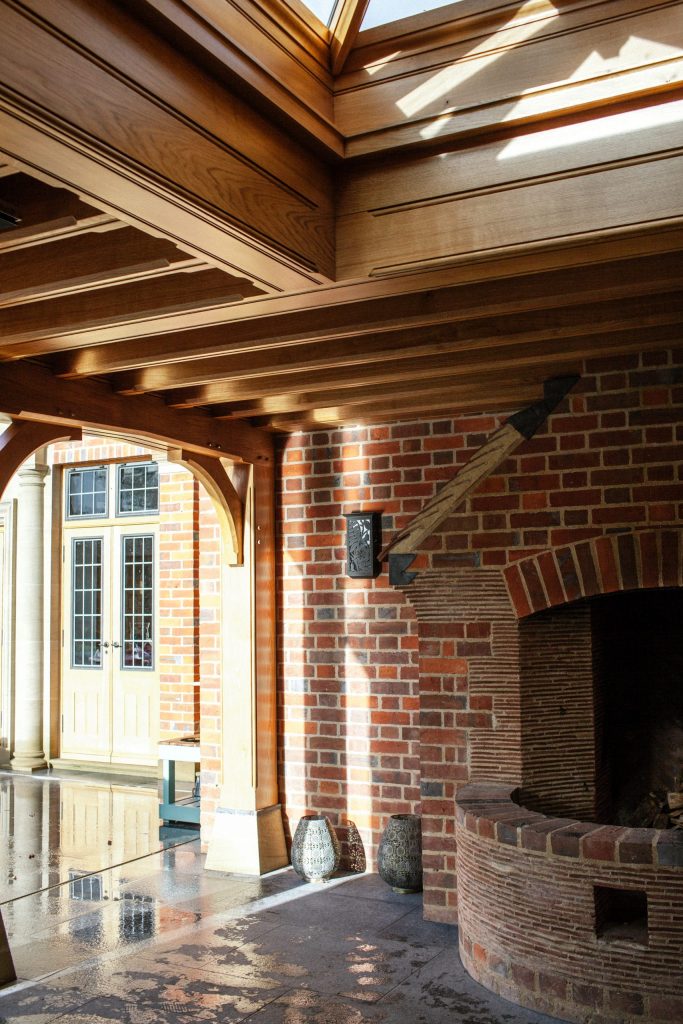
Outdoor fireplace and dining area – J Lees Architects
‘…a beautiful building that is impractical is not worth anything to anyone.’
‘Does the profession or our society allow for their equals again?‘
Whilst I will never diminish the skill of the crafts and construction trades, the very best buildings are a result of the genius of the individual. Brunelleschi’s Dome at Florence Cathedral, Wren’s St Pauls, Adam’s Kedleston Hall, Lutyens and Voysey’s many houses were the results of a creative genius that cannot be replaced or carried out by others. They are works of individual art much in same way as we see the difference between a Caravaggio or Van Gogh, a Michelangelo or a Raphael. Does the profession or our society allow for their equals again?
We are at a time when art and architecture has never before been so accessible. Rather than spending 5 years on a grand tour of the antiquities, an enthusiastic student of architecture can travel the sights of the world in weeks or months and often on a shoestring. Rather than having to own a library, a student can find reference to a building and inspiration at the touch of a button. Never before has so much past knowledge been so accessible to all of us, irradicating any form of archaic class or financial barrier of exposure to the arts. The technology and tools available to architects is constantly advancing, as is the profession. The plethora of architectural styles around the world is breathtaking, each, when executed well, create beauty for our environments. So, is architectural style important? no, but beauty most certainly is.
Do the brakes of trending styles need to be tapped?, does momentum need to be guarded just a little to ensure that not everyone passes along the same path like lemmings and beauty bypassed? Does everyone have to conform to the norm? I will wrap up this writing with a poignant extract from Jackson on the role of the Architect;
‘Our proper field is not confined to the office; we are, or should be, still more at home in the workshop or the building sheds; our brethren are not the lawyer and the doctor, but the craftsmen and the artisan’.
(Introduction, page xxviii. ‘Architecture a profession or an Art; thirteen short essays on the qualifications and training of architects’ published in 1892. T.G Jackson A.R.A)
‘We must all, who practice architecture, not lose sight of the importance of art in architecture, for it is at the heart of all our work.‘
Return to the Writings Library for more essays and Project Profiles
